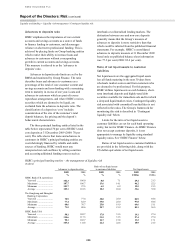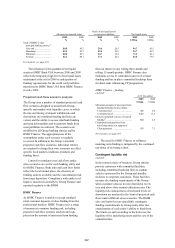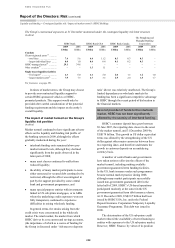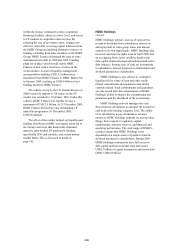HSBC 2009 Annual Report Download - page 241
Download and view the complete annual report
Please find page 241 of the 2009 HSBC annual report below. You can navigate through the pages in the report by either clicking on the pages listed below, or by using the keyword search tool below to find specific information within the annual report.-
 1
1 -
 2
2 -
 3
3 -
 4
4 -
 5
5 -
 6
6 -
 7
7 -
 8
8 -
 9
9 -
 10
10 -
 11
11 -
 12
12 -
 13
13 -
 14
14 -
 15
15 -
 16
16 -
 17
17 -
 18
18 -
 19
19 -
 20
20 -
 21
21 -
 22
22 -
 23
23 -
 24
24 -
 25
25 -
 26
26 -
 27
27 -
 28
28 -
 29
29 -
 30
30 -
 31
31 -
 32
32 -
 33
33 -
 34
34 -
 35
35 -
 36
36 -
 37
37 -
 38
38 -
 39
39 -
 40
40 -
 41
41 -
 42
42 -
 43
43 -
 44
44 -
 45
45 -
 46
46 -
 47
47 -
 48
48 -
 49
49 -
 50
50 -
 51
51 -
 52
52 -
 53
53 -
 54
54 -
 55
55 -
 56
56 -
 57
57 -
 58
58 -
 59
59 -
 60
60 -
 61
61 -
 62
62 -
 63
63 -
 64
64 -
 65
65 -
 66
66 -
 67
67 -
 68
68 -
 69
69 -
 70
70 -
 71
71 -
 72
72 -
 73
73 -
 74
74 -
 75
75 -
 76
76 -
 77
77 -
 78
78 -
 79
79 -
 80
80 -
 81
81 -
 82
82 -
 83
83 -
 84
84 -
 85
85 -
 86
86 -
 87
87 -
 88
88 -
 89
89 -
 90
90 -
 91
91 -
 92
92 -
 93
93 -
 94
94 -
 95
95 -
 96
96 -
 97
97 -
 98
98 -
 99
99 -
 100
100 -
 101
101 -
 102
102 -
 103
103 -
 104
104 -
 105
105 -
 106
106 -
 107
107 -
 108
108 -
 109
109 -
 110
110 -
 111
111 -
 112
112 -
 113
113 -
 114
114 -
 115
115 -
 116
116 -
 117
117 -
 118
118 -
 119
119 -
 120
120 -
 121
121 -
 122
122 -
 123
123 -
 124
124 -
 125
125 -
 126
126 -
 127
127 -
 128
128 -
 129
129 -
 130
130 -
 131
131 -
 132
132 -
 133
133 -
 134
134 -
 135
135 -
 136
136 -
 137
137 -
 138
138 -
 139
139 -
 140
140 -
 141
141 -
 142
142 -
 143
143 -
 144
144 -
 145
145 -
 146
146 -
 147
147 -
 148
148 -
 149
149 -
 150
150 -
 151
151 -
 152
152 -
 153
153 -
 154
154 -
 155
155 -
 156
156 -
 157
157 -
 158
158 -
 159
159 -
 160
160 -
 161
161 -
 162
162 -
 163
163 -
 164
164 -
 165
165 -
 166
166 -
 167
167 -
 168
168 -
 169
169 -
 170
170 -
 171
171 -
 172
172 -
 173
173 -
 174
174 -
 175
175 -
 176
176 -
 177
177 -
 178
178 -
 179
179 -
 180
180 -
 181
181 -
 182
182 -
 183
183 -
 184
184 -
 185
185 -
 186
186 -
 187
187 -
 188
188 -
 189
189 -
 190
190 -
 191
191 -
 192
192 -
 193
193 -
 194
194 -
 195
195 -
 196
196 -
 197
197 -
 198
198 -
 199
199 -
 200
200 -
 201
201 -
 202
202 -
 203
203 -
 204
204 -
 205
205 -
 206
206 -
 207
207 -
 208
208 -
 209
209 -
 210
210 -
 211
211 -
 212
212 -
 213
213 -
 214
214 -
 215
215 -
 216
216 -
 217
217 -
 218
218 -
 219
219 -
 220
220 -
 221
221 -
 222
222 -
 223
223 -
 224
224 -
 225
225 -
 226
226 -
 227
227 -
 228
228 -
 229
229 -
 230
230 -
 231
231 -
 232
232 -
 233
233 -
 234
234 -
 235
235 -
 236
236 -
 237
237 -
 238
238 -
 239
239 -
 240
240 -
 241
241 -
 242
242 -
 243
243 -
 244
244 -
 245
245 -
 246
246 -
 247
247 -
 248
248 -
 249
249 -
 250
250 -
 251
251 -
 252
252 -
 253
253 -
 254
254 -
 255
255 -
 256
256 -
 257
257 -
 258
258 -
 259
259 -
 260
260 -
 261
261 -
 262
262 -
 263
263 -
 264
264 -
 265
265 -
 266
266 -
 267
267 -
 268
268 -
 269
269 -
 270
270 -
 271
271 -
 272
272 -
 273
273 -
 274
274 -
 275
275 -
 276
276 -
 277
277 -
 278
278 -
 279
279 -
 280
280 -
 281
281 -
 282
282 -
 283
283 -
 284
284 -
 285
285 -
 286
286 -
 287
287 -
 288
288 -
 289
289 -
 290
290 -
 291
291 -
 292
292 -
 293
293 -
 294
294 -
 295
295 -
 296
296 -
 297
297 -
 298
298 -
 299
299 -
 300
300 -
 301
301 -
 302
302 -
 303
303 -
 304
304 -
 305
305 -
 306
306 -
 307
307 -
 308
308 -
 309
309 -
 310
310 -
 311
311 -
 312
312 -
 313
313 -
 314
314 -
 315
315 -
 316
316 -
 317
317 -
 318
318 -
 319
319 -
 320
320 -
 321
321 -
 322
322 -
 323
323 -
 324
324 -
 325
325 -
 326
326 -
 327
327 -
 328
328 -
 329
329 -
 330
330 -
 331
331 -
 332
332 -
 333
333 -
 334
334 -
 335
335 -
 336
336 -
 337
337 -
 338
338 -
 339
339 -
 340
340 -
 341
341 -
 342
342 -
 343
343 -
 344
344 -
 345
345 -
 346
346 -
 347
347 -
 348
348 -
 349
349 -
 350
350 -
 351
351 -
 352
352 -
 353
353 -
 354
354 -
 355
355 -
 356
356 -
 357
357 -
 358
358 -
 359
359 -
 360
360 -
 361
361 -
 362
362 -
 363
363 -
 364
364 -
 365
365 -
 366
366 -
 367
367 -
 368
368 -
 369
369 -
 370
370 -
 371
371 -
 372
372 -
 373
373 -
 374
374 -
 375
375 -
 376
376 -
 377
377 -
 378
378 -
 379
379 -
 380
380 -
 381
381 -
 382
382 -
 383
383 -
 384
384 -
 385
385 -
 386
386 -
 387
387 -
 388
388 -
 389
389 -
 390
390 -
 391
391 -
 392
392 -
 393
393 -
 394
394 -
 395
395 -
 396
396 -
 397
397 -
 398
398 -
 399
399 -
 400
400 -
 401
401 -
 402
402 -
 403
403 -
 404
404 -
 405
405 -
 406
406 -
 407
407 -
 408
408 -
 409
409 -
 410
410 -
 411
411 -
 412
412 -
 413
413 -
 414
414 -
 415
415 -
 416
416 -
 417
417 -
 418
418 -
 419
419 -
 420
420 -
 421
421 -
 422
422 -
 423
423 -
 424
424 -
 425
425 -
 426
426 -
 427
427 -
 428
428 -
 429
429 -
 430
430 -
 431
431 -
 432
432 -
 433
433 -
 434
434 -
 435
435 -
 436
436 -
 437
437 -
 438
438 -
 439
439 -
 440
440 -
 441
441 -
 442
442 -
 443
443 -
 444
444 -
 445
445 -
 446
446 -
 447
447 -
 448
448 -
 449
449 -
 450
450 -
 451
451 -
 452
452 -
 453
453 -
 454
454 -
 455
455 -
 456
456 -
 457
457 -
 458
458 -
 459
459 -
 460
460 -
 461
461 -
 462
462 -
 463
463 -
 464
464 -
 465
465 -
 466
466 -
 467
467 -
 468
468 -
 469
469 -
 470
470 -
 471
471 -
 472
472 -
 473
473 -
 474
474 -
 475
475 -
 476
476 -
 477
477 -
 478
478 -
 479
479 -
 480
480 -
 481
481 -
 482
482 -
 483
483 -
 484
484 -
 485
485 -
 486
486 -
 487
487 -
 488
488 -
 489
489 -
 490
490 -
 491
491 -
 492
492 -
 493
493 -
 494
494 -
 495
495 -
 496
496 -
 497
497 -
 498
498 -
 499
499 -
 500
500 -
 501
501 -
 502
502 -
 503
503 -
 504
504
 |
 |

239
in unemployment and bankruptcy filings. Impaired
loans were broadly stable at US$846 million.
In Rest of Asia-Pacific, new loan impairment
allowances rose by 18 per cent to US$1.1 billion,
mainly due to increased delinquencies on unsecured
lending, particularly in the credit card and personal
lending portfolios in India and, to a lesser extent,
in Indonesia. In the corporate and commercial
portfolios, new loan impairment allowances
increased, reflecting a deterioration in India’s
economic conditions. Impaired loans increased
by 44 per cent to US$1.2 billion.
Releases and recoveries in the Rest of
Asia-Pacific region rose by 42 per cent to
US$214 million at 31 December 2009.
New loan impairment allowances in the Middle
East increased significantly from a low base, to
US$1.4 billion. The increase reflected higher charges
in the UAE, largely in Dubai, due to a marked
deterioration in credit quality which particularly
affected the real estate and construction industries.
Infrastructure projects were delayed or cancelled and
unemployment levels increased. Delinquency rates
rose as a result, particularly in the credit card and
personal loan portfolios. Impaired loans increased by
US$1.4 billion to US$1.7 billion.
New loan impairment allowances rose by
7 per cent to US$26.4 billion despite falls of
12 per cent in Hong Kong and 7 per cent in
North America.
In North America, new loan impairment
allowances declined by 7 per cent to US$15.6 billion
against the backdrop of a widespread rise in
unemployment, continued weakness in the US
economy and housing markets, higher levels of
personal bankruptcy filings and portfolio seasoning.
This decline was the result of lower loan impairment
charges in the Mortgage Services real estate secured,
credit card and vehicle finance portfolios, partially
offset by higher loan impairment charges in the
branch-based Consumer Lending business. Apart
from the changes made to the write-off period, the
main contributing factors were as follows:
• new loan impairment allowances in the
Mortgage Services business decreased in 2009
as the portfolio continued to run off. While loss
severities increased compared with 2008, a
higher percentage of impairment was in respect
of first lien loans which have less severity than
second lien loans;
• new loan impairment allowances in the vehicle
finance loan portfolio decreased as a result of
lower loan levels reflecting the discontinuance
of vehicle finance originations in July 2008. In
addition, loss severities decreased as prices on
repossessed vehicles improved; and
• new loan impairment allowances in the branch-
based Consumer Lending business increased in
2009, primarily in the unsecured portfolio due to
the deterioration in the 2006 and 2007 vintages
which were more pronounced in certain
geographic regions and, to a lesser extent, first
lien real estate secured loans. These increases
were partially offset by lower new loan
impairment allowances for second lien real
estate secured loans.
New loan impairment allowances in the Cards
and Retail Services portfolios declined due to lower
outstanding balances and management action taken
in the past two years to constrain origination
activities in riskier segments. In addition,
impairment provisioning reflects an improved
outlook on future loss estimates as the impact of
higher unemployment rates on losses has not been as
severe as initially expected due, in part, to lower fuel
prices and the boost to cash flow provided by
government stimulus programmes that meaningfully
benefit non-prime customers. In HSBC Bank USA
personal lending portfolios, new loan impairment
allowances increased, mainly in prime residential
mortgage lending.
New loan impairment allowances in the
corporate and commercial lending portfolios
increased as the weaker economy affected firms in
the commercial real estate and construction sectors
in the US. In Canada, higher new loan impairment
allowances were primarily against exposures in the
commercial real estate, manufacturing and trade
sectors.
In North America, releases and recoveries
increased by 14 per cent to US$205 million at
31 December 2009 due to an increase in the
repayment of loans previously impaired in the
corporate, commercial and financial portfolios.
Impaired loans decreased by 7 per cent to
US$13.3 billion at 31 December 2009.
New loan impairment allowances in Latin
America increased by 18 per cent to US$2.9 billion,
while impaired loans rose by 27 per cent to
US$3.0 billion. The increase in new loan impairment
allowances in Brazil was driven by higher
delinquencies, mainly in credit cards, overdrafts and
payroll loans, due to higher unemployment. In the
commercial portfolio, higher new loan impairment
allowances reflected the challenging economic
